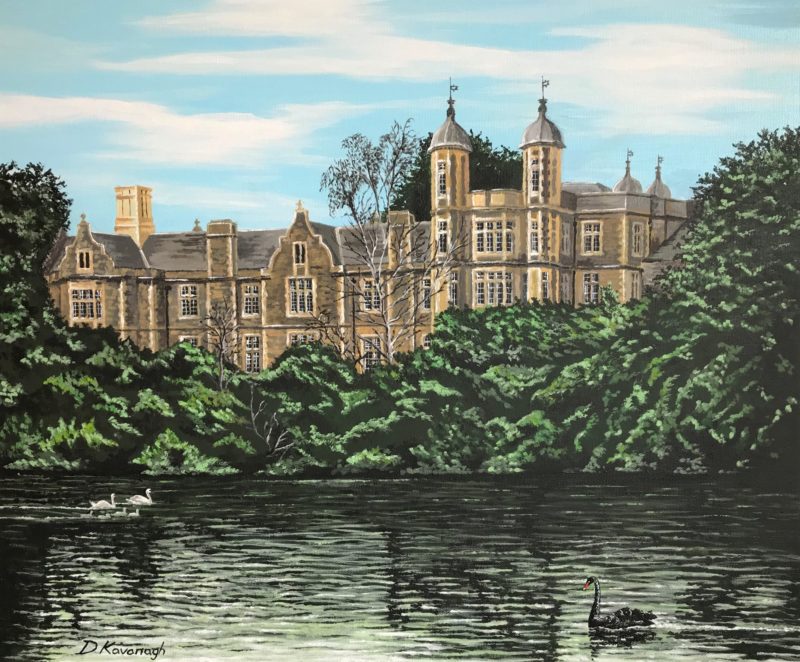
Bird flu continues to take its toll on wild birds – including the much admired black swan Bruce, who was formerly a beloved feature of Eagle Pond.
And a debate is raging between those who fear feeding birds encourages them to come into contact with each other and thus risk spreading the disease, and those who think feeding the birds strengthens them and will make them more resilient.
Richard Arnopp of the Friends of Wanstead Parklands has set out their position on feeding – for the time being their advice follows that given by Epping Forest, which is that people should not feed birds. His full statement is below.
Richard Arnopp of Friends of Wanstead Park writes:
Avian Influenza – “bird flu” – has been much in the news in recent months, and nobody who visits the Friends’ Facebook page could be unaware of the impact it has had locally.
Bird flu is not new. It was first described in 1878 as “fowl plague” but has certainly been around a lot longer than that. The virus naturally spreads most readily among wild waterfowl and shorebirds worldwide and can infect domestic poultry and other bird and animal species. Unfortunately, many of the wild species which are most at risk are migratory, often over vast distances, and carry the virus with them.
Susceptible birds become infected when they have contact with the virus as it is shed through infected saliva, nasal secretions, and droppings. They also can become infected through contact with contaminated surfaces or water. Not all birds are equally at risk – pigeons, for example, do not catch or transmit bird flu readily and, when they are infected, rarely show significant signs of illness. Other species may act as reservoirs of the disease, but do not become ill themselves.
Bird flu belongs to the same family of viruses as human influenza (which also ultimately originated in birds and reached us via domesticated pigs). It can infect human beings but, as it is not an airborne disease, does not spread very readily.
The roots of the present pandemic go back to 1996, when the highly pathogenic H5N1 variant of the virus was first identified in domestic waterfowl in Southern China. This was the ancestor of the variant which has caused the current outbreak, which spread west across Eurasia and reached the British Isles in November 2021. While there are many strains that are relatively mild, H5N1 can cause multiple organ failure and has a high mortality rate in susceptible species. There is no vaccine, and no effective treatment.
By June of this year, it was being reported that British seabird colonies had been hit hard, with thousands of birds dying and some important breeding sites being left almost deserted. The spread of bird flu inland has not been logged systematically, as only outbreaks in domesticated flocks are officially recorded. However, these reports now run into hundreds and are widely distributed geographically. Across Asia, Europe and North America, tens of millions of domesticated fowl – chickens, turkeys and ducks – have been culled.
Locally, bird flu was confirmed in Epping Forest in late October, and there have since been some dozens of fatalities among geese and swans. The sight of densely populated water bodies, such as Eagle Pond, littered with dead and dying birds, has been very distressing to local people.
Epping Forest, after consultation with the Department for Environment, Food & Rural Affairs (Defra) published advice to the public as soon as bird flu had been confirmed –
- Do not feed wild birds.
- Do not touch dead or sick birds.
- Keep dogs away from wild birds.
- Do not touch wild bird feathers or surfaces contaminated with wild bird droppings.
- Please report dead wild waterfowl, gulls or birds of prey to 020 8532 1010
The request not to feed birds – on the ground that it encourages flocking – proved controversial, with two local organisations taking opposing positions. The local Swan Rescue group do good work picking up injured swans and geese and arranging for their treatment and rehabilitation. They have been very active during the bird flu outbreak and have encouraged the public to feed birds on the ground that good nutrition will help them avoid or fend off infection. The Wren Wildlife and Conservation Group, on the other hand, with which the Friends work closely, agree with the official advice not to feed birds at this time.
The debate on feeding has reached the Friends’ Facebook page, of which I am Administrator. Unfortunately, the impact of the upsetting news and images we are currently seeing means that discussion of the subject has sometimes become fraught. Supporters of feeding are numerous and vocal and, although I have not sought to suppress any reasonably-expressed point of view, I have had to intervene on several occasions to ensure that the debate does not become too one-sided or acrimonious.
The Friends of Wanstead Parklands take the official position on feeding seriously. The reason that we have not hitherto taken a stronger line on social media is twofold.
Firstly, Epping Forest is not actively attempting to enforce its no-feeding advice at present. So far, the death toll on the Forest’s water bodies has been lower than feared. Until something changes, it has publicised Defra’s advice but is not taking any further steps.
Secondly, although the official no-feeding advice makes perfect sense in general terms, we acknowledge the argument that local conditions may justify a different approach. The proposition that feeding encourages flocking is less convincing in the more urbanised south of the Forest, where large-scale feeding of waterfowl on some water bodies is long-established. Birds there have come to expect and depend on feeding, and they already live in unnatural population densities because of it. That situation pre-dates bird flu and is not easily reversible. This may suggest a pragmatic case for continued feeding in present circumstances. To give a specific example, the many hungry birds on the Eagle Pond, off Snaresbrook Road, can only be supported by additional feeding, as natural resources are insufficient. In the short term, there is possible evidence that the extra food supplies are helping some swans to overcome this infection. However, it is too early to claim it as a success as new arrivals attracted by feeding may bring in further infections too.
In principle, the sustained, predictable feeding of wildlife is not a good thing. As well as facilitating the transmission of disease, crowding in response to human intervention has a variety of other undesirable consequences. One is that each breeding pair of swans needs access to a reasonable sized aquatic territory with sufficient natural food to raise a brood successfully. Too small an area with an insufficient food supply causes ferocious territorial battles, which may end in death. For some individuals, failure to find a territory will prevent pairing or successful breeding. Also, swans are large birds which uproot and consume submerged aquatic vegetation. They eat between 4 -8 lbs of material per day, often uprooting more than they consume. Overpopulation may cause ecological damage, and overfeeding may lead to pollution and rat infestations from the dumping of food.
Of course, the reality is that people like to feed animals and birds, and the wildlife likes to be fed, so trying to stop it is an uphill struggle. Long-term, beyond bird flu, a nuanced message focusing on moderate and appropriate feeding may be more realistic than just saying “no”, even if that does not really resolve the problem.
In the meantime, the watchword on bird flu is still “wait and see”. Ecologists are doing their best to monitor the developing situation, but data available so far does paint a worrying picture which will only be aggravated by the arrival of more migratory birds from Europe. We will continue to liaise with other interested parties and will keep you informed. If Epping Forest concludes that active enforcement of the no-feeding message is required during the bird flu pandemic, we will endorse that and promotion of alternative advice on our social media pages will cease.

There should be action taken against those that wilfully and covertly drop kilos of bird feed along and around the surrounding roads of the high street encouraging huge flocks of pigeons to plague the high street.